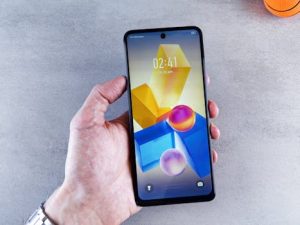Self-Optimizing Personal Technology: Intelligent Devices Continuously Improving Performance
The rapid advancement of technology has changed the way we live, work, and communicate. From smartphones and smartwatches to virtual assistants and smart homes, we are surrounded by intelligent devices that have become an integral part of our daily lives. But what if these devices could continuously improve their performance on their own, without the need for human input? This concept, known as self-optimizing personal technology, is set to revolutionize the way we interact with our devices. In this article, we will explore the capabilities of self-optimizing personal technology and how it is changing the landscape of the digital world.
What is Self-Optimizing Personal Technology?
Self-optimizing personal technology refers to devices that have the ability to continuously improve their performance by learning from user behavior and adapting accordingly. These intelligent devices use various technologies such as artificial intelligence (AI), machine learning, and data analytics to analyze user data and make adjustments to optimize their performance.
For example, let’s say you have a smartwatch that tracks your daily activities such as steps taken, calories burned, and sleep patterns. Over time, the smartwatch learns your daily routine and can provide personalized recommendations to help you achieve your fitness goals. This is possible because of the self-optimizing capabilities of the device.
The Benefits of Self-Optimizing Personal Technology
1. Personalized Experience
One of the major benefits of self-optimizing personal technology is the personalized experience it provides. Since these devices learn from user behavior, they can create a customized experience for each individual. This not only enhances user satisfaction but also increases the efficiency of the device.
For instance, a virtual assistant can learn your preferences and provide personalized recommendations based on your interests and habits. This makes it easier for you to access the information or services you need, saving you time and effort.
2. Improved Performance
Self-optimizing personal technology can significantly improve the performance of devices. Since these devices constantly adapt to user behavior, they can make adjustments to optimize their performance. This can result in faster processing, better accuracy, and improved overall functioning of the device.
Moreover, self-optimizing technology can also identify and fix any issues that may arise, preventing them from impacting the user’s experience. This not only saves the user from the frustration of dealing with malfunctioning devices but also increases the longevity of the device.
3. Real-time Learning
Unlike traditional devices that require manual updates to improve performance, self-optimizing personal technology learns and adapts in real-time. This means that the device is constantly gathering data and making adjustments on the go. This allows for a seamless user experience without any interruptions or delays.
Additionally, real-time learning also means that the device can quickly adapt to changes in user behavior, ensuring that the recommendations and suggestions provided are always relevant and up-to-date.
The Future of Self-Optimizing Personal Technology
The potential of self-optimizing personal technology is endless. As technology continues to advance, we can expect to see more devices with self-optimizing capabilities introduced in the market. From smart homes that can learn and adapt to users’ preferences to self-driving cars that can continuously improve their performance, the possibilities are endless.
Moreover, the integration of self-optimizing technology with other emerging technologies such as the Internet of Things (IoT) and 5G networks will further enhance its capabilities and open up new opportunities for innovation.
In Conclusion
Self-optimizing personal technology is not just about making our devices smarter; it is about enhancing the overall user experience. With the ability to continuously learn and adapt, these devices are changing the way we interact with technology.
As we move towards a more connected world, self-optimizing personal technology will become an essential part of our daily lives. It will improve the efficiency, performance, and personalization of our devices, making our lives easier and more convenient.
In conclusion, self-optimizing personal technology is set to revolutionize the way we use and interact with our devices. It is a game-changer in the digital world and will continue to shape the future of technology.











